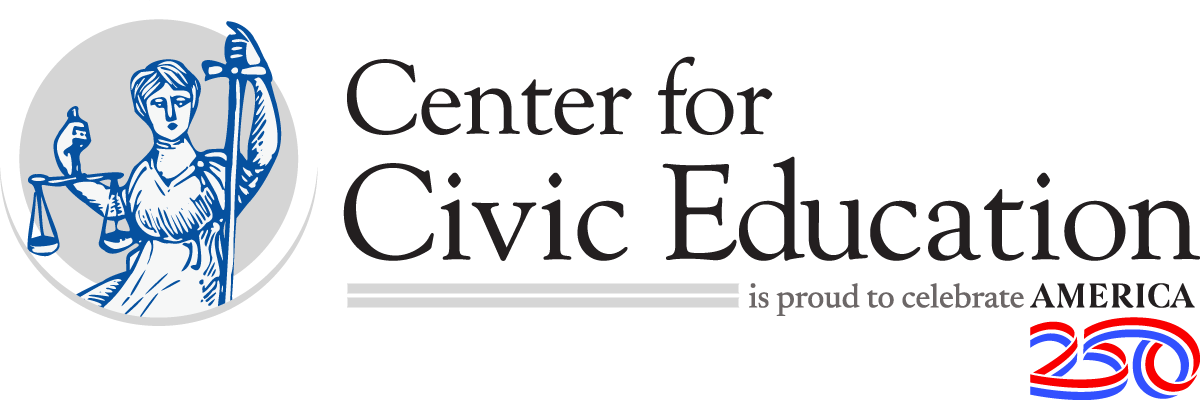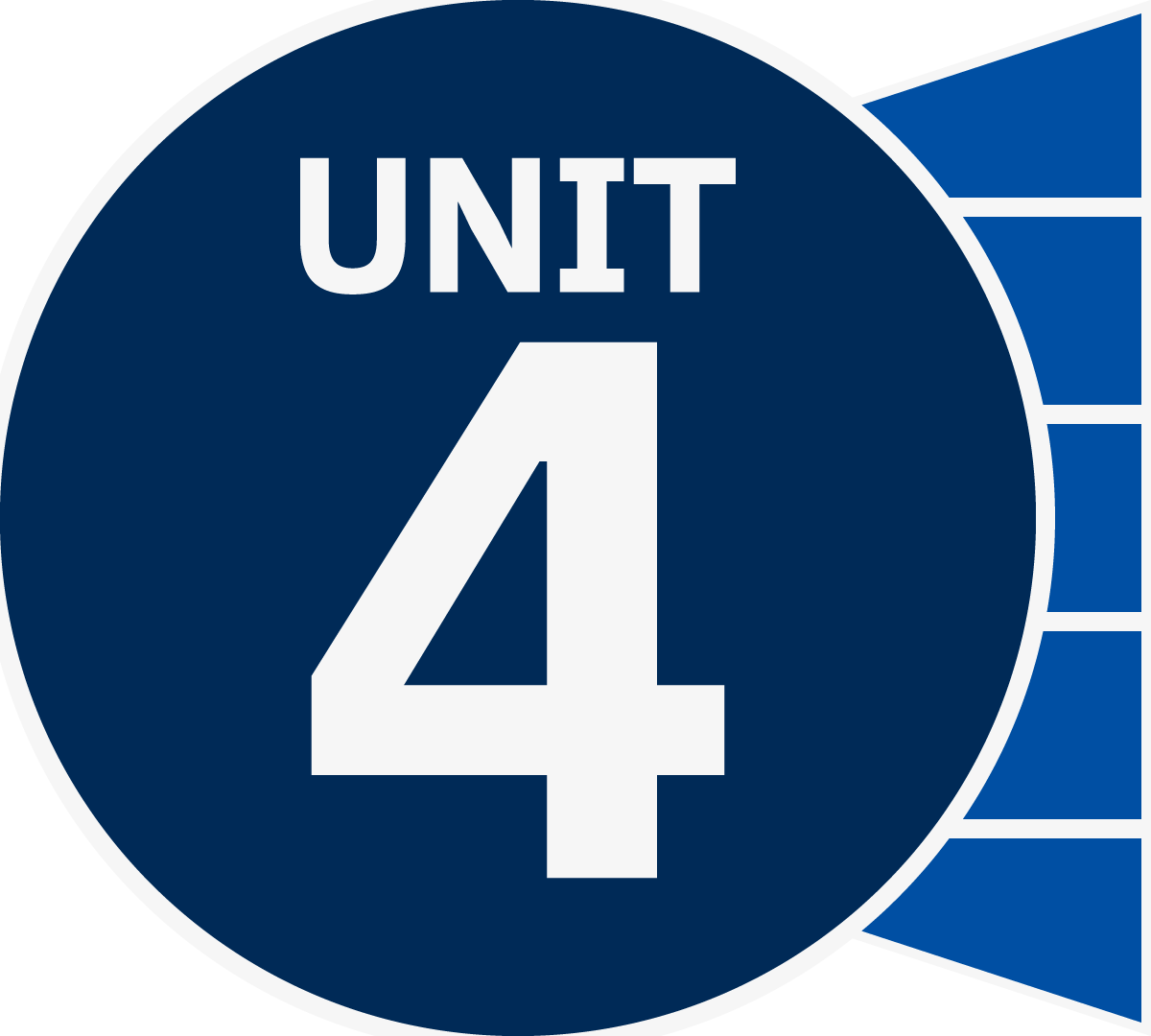Inquiry Companion: Unit 4
Unit 4 challenges students to investigate both the genius and the missed opportunities in the system of checks and balances and division of power. Our Inquiry Companion Guide activities for Unit 4 facilitate student participation in inquiry-based civics learning for each strategy.
Students engage by creating a Venn diagram of the division of power between the federal government and state governments as well as explore the role federalism plays in their lives today. They will explain the division of powers as illustrated in Marbury v Madison by participating in a Paideia Seminar. Students then elaborate on their knowledge of judicial review through a democratic experience simulation. Finally, students will evaluate their understanding of constitutional principles by creating an infographic.
Best practices for culturally responsive teaching weave through each activity.
Inquiry Guide Activity
- Unit 4, Lesson 25: What Is the Role of the Supreme Court in the American Constitutional System?
- Unit 4, Lesson 21: How Does the U.S. Supreme Court Use the Power of Judicial Review?
- Unit 4, Lesson 22: How Does the U.S. Supreme Court Determine the Meaning of the Words in the Constitution?
- Active learning
- Attentiveness to political matters
- Compromise
- Critical thinking
- Relationship skills
- Self-management
- Identify constitutional principles such as judicial review, federalism, and checks and balances, and apply understandings to Supreme Court cases.
- Demonstrate an understanding of constitutional principles by explaining how the Supreme Court should decide on certain cases.
- Defend a position(s) regarding certain Supreme Court cases while recognizing the actual opinion of the Court.
- Is the Supreme Court too powerful?
- 14th Amendment States that no person shall have their life, liberty, or property taken away by state or local governments without due process of law. This amendment protects your right to be treated fairly by your state and local governments. It also defines a citizen as anyone born or naturalized in the United States. It was one of the Civil War amendments.
- checks and balances The sharing and balancing of power among different branches of government so no one branch can completely control the others.
- federal system A form of government in which power is divided between a central government and state and local governments.
- judicial review The power of the courts to say that the Constitution does not allow the government to do something.
- petitioner The party who petitions the Supreme Court to review the case. This party is also known as the appellant.
- respondent The party being sued or tried and is also known as the appellee.
- supremacy clause The clause in the U.S. Constitution that explains that states cannot make laws that conflict with the U.S. Constitution or with the laws made by Congress.
The Constitution is the “Supreme Law of the Land.” Written in 1787, the Framers could not have possibly thought of all the issues that would affect our country today, nor specifically outline the Court’s appropriate role in all cases. The Supreme Court is charged with not only deciding how the Constitution should be interpreted when difficult questions about federalism, checks and balances, and the rights of people arise, but the Court also plays a role in various contemporary social and political issues.
On the one hand, the powers of the Supreme Court are viewed as proportionate when judicial review is used to strike down laws that violate constitutional principles, preventing potential abuses by the legislative or executive branches. This authority is seen as a crucial mechanism for protecting individual liberties and maintaining national stability through the rule of law. Associate Justice Brett Kavanaugh shared the weight of the Supreme Court’s decision-making process, stating that “The Supreme Court is the last line of defense for the separation of powers and for the rights and liberties guaranteed by the Constitution.” On the other hand, critics of the Supreme Court’s power contend that the Court has overreached its role at times, as the unelected judges make decisions that can significantly impact social and political issues. The Court’s interpretation of constitutional provisions may be subjective, and some argue that it can go beyond its intended role by effectively making or remaking laws from the courtroom. The perception that the Court can shape policy on contentious issues has led to debates about the appropriate extent of the Court’s power and the need for mechanisms to ensure a more democratic and accountable judicial system. As a result of these tensions, the Supreme Court has long been faced with the challenge of how to balance its power.
Additional resources for teacher background:
- What are the constitutional powers of the Supreme Court? L25S1 (Video)
- Limits on the Power of the Supreme Court (Video)
- What checks exist on the power of the Supreme Court? (Video)
Additional teaching note: In this lesson, students will examine the Supreme Court’s decision-making process through cases involving state versus federal authority and the checks and balances among the branches of government. Before this lesson, teachers should be familiar with the workings of the Supreme Court. Asking students to take sides on issues can lead to uncomfortable conversations in your classroom. Using constitutional principles as a guide to decision-making will alleviate some of the political pressures associated with current issues. Each of these cases was selected because of their landmark status or their educational relevance to the principles selected. As the teacher, feel free to add or remove cases for your class. Teachers should preview all student materials and resources prior to the lesson.
Part 1
- Welcome students to social studies, which today will be known as the party-planning committee.
- Introduce the inquiry question: “Is the Supreme Court too powerful?”
- Allow students time to make a prediction about the inquiry question as well as offer their own supporting questions.
- Tell students that today we will investigate the impact of constitutional principles on decision-making in government.
- Conduct a quick brainstorm of constitutional principles. Consider recording student responses on an anchor chart, which may include, but are not limited to, popular sovereignty, separation of powers, checks and balances, federalism, limited government, rule of law, judicial review, etc.
- Review the concept of federalism by telling students that the American constitutional system is made up of two levels of government: national and state. The system is called federalism. The powers of and the boundaries between the national and state governments have never been clear. Sometimes, the national and state governments seem to work in harmony. Sometimes, they seem locked in a struggle for power.
- Distribute Constitutional Principles and, as a class, review the Annotation Station strategies to ensure students understand expectations:
- ❍ Circle words you don’t know and take a moment to find the definition.
- Highlight in YELLOW phrases that confuse you. Use context clues to figure out their meaning.
- Highlight in RED any references to limitations or evidence of checks and balances.
- Highlight in GREEN any references to rights or responsibilities guaranteed or protected.
- ✩ Star the phrase or line that you find most important for each principle.
- Using your routine strategy for establishing groups, divide students into groups of three or four.
- Instruct students to work collaboratively in order to read and annotate the constitutional principles on the handout.
- Circulate around the room, encouraging each group, observing progress, and redirecting as needed.
- Return to full group format to briefly discuss the constitutional principles together.
- Play The Least Dangerous Branch. While students watch, they should listen for the powers that are held by the judicial branch.
- Play the video a second time to ensure comprehension, if needed.
- Allow time for a brief discussion or an opportunity for students’ questions.
Part 2
- Students should remain in groups of three or four.
- Tell students that we will use our expert knowledge of constitutional principles to take on the role of a Supreme Court justice and rule on some important issues in our government.
- Distribute You Be the Judge Scenarios and You Be the Judge Ruling.
- To model expectations, read Scenario #1 together and discuss the constitutional principles at play.
- Model how to complete Scenario #1 on the You Be the Judge Ruling handout.
- Instruct students to work collaboratively in order to read the scenarios, discuss each case, and make their ruling. Groups should write their decisions on their You Be the Judge Ruling handout.
- Circulate around the room, encouraging each group, observing progress, and redirecting as needed.
Part 3
- Teachers will facilitate a Vote with Your Feet walking activity to debrief case by case where students move to the side of the room that they thought should win the case.
- Once students choose a side, allow three minutes for students to discuss the case with their classmates who share their opinions on the ruling.
- Students should decide on the key constitutional principles that support their opinion of the ruling for each case.
- Encourage a volunteer from each side to share their group’s consensus on the key constitutional principles that support their opinion of the ruling.
- Teachers should pause after each scenario to provide students with the actual Supreme Court ruling found on the You Be the Judge Answer Key.
- The following phrases will assist in facilitating this activity:
- Scenario #1: If you think that the Gun-Free School Zone Act is constitutional, move to the right. If you think it is unconstitutional, move to the left. You now have three minutes to discuss and choose one person to share your group’s key constitutional principle.
- Scenario #2: If you think that the state law means that the federal government should not destroy or stop state sales of medical marijuana, move to the right. If you think that the federal government had the right to destroy the plants and file charges, move to the left. You now have three minutes to discuss and choose one person to share your group’s key constitutional principle.
- Scenario #3: If you think that Congress can remove all federal funding for Medicaid from states that do not expand the program, move to the right. If you think that Congress cannot pull all federal funding for Medicaid, move to the left. You now have three minutes to discuss and to choose one person to share your group’s key constitutional principle.
- Scenario #4: If you believe that the president should have unlimited executive privilege, move to the right. If you do not think the president should have unlimited executive privilege, move to the left. You now have three minutes to discuss and choose one person to share your group’s key constitutional principle.
- Scenario #5: If you think that the president should have a line-item veto, move to the right. If you think that the president should not have a line-item veto, move to the left. You now have three minutes to discuss and choose one person to share your group’s key constitutional principle.
- Follow the procedure to facilitate a discussion of all five scenarios.
- Facilitate a discussion about the power of the Supreme Court and judicial review.













